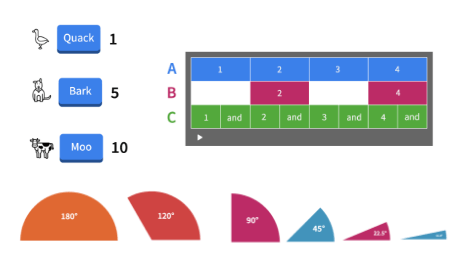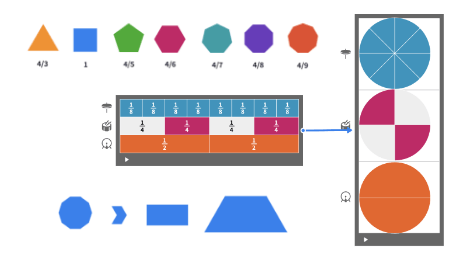Mathematics and Music
Mathematics music are closely linked, and the unique new music tools in Polypad provide a whole new dimension for students and teachers to interact with mathematics.
What do polygons sound like? What rhythms do different fractions make? By translating the most common mathematical representations into audio, we hope to open a new path into the math classroom.
Mathematics is no longer a silent movie.
Many of our manipulatives can be used to generate music in – allowing students to be creative, while revealing deep mathematical relationships and making visual content more accessible.
Using rhythm, pitch, volume and timbre, sound can provide intuitive ways to understand a wide range of mathematical concepts such as rates, ratios, proportionality, geometric relationships, fractions, sequencing, graphs, basic operations, functions, word problems and more.
Students can compose their own beats, melodies, loops, and full songs, entirely out of math manipulatives. This offers a fun way to apply their passions in school, especially for students who love music and dance:
Try our Lessons!
We have written more than 50 lessons about music and math, covering topics like angles, area, perimeter, rates and ratios, factors and multiples, fractions, algebra, word problems, and more. These are complete free, and appropriate for a wide range of student ages:
Improved Accessibility
We especially want these tools to expand access for blind, sight-challenged, dyslexic, or otherwise neurologically atypical students who may not be able to connect to a purely visual form of math instruction, and/or could benefit from a multi-sensory approach.
By using math manipulatives to compose their own beats and songs, students can think deeply about mathematical concepts while applying their creativity to something they feel personally connected to. They can share their songs with friends and family—all while developing their sense of themselves as mathematical (and musical) thinkers.
 Grades K–2
Grades K–2 Grades 3–5
Grades 3–5 Grades 6–8
Grades 6–8